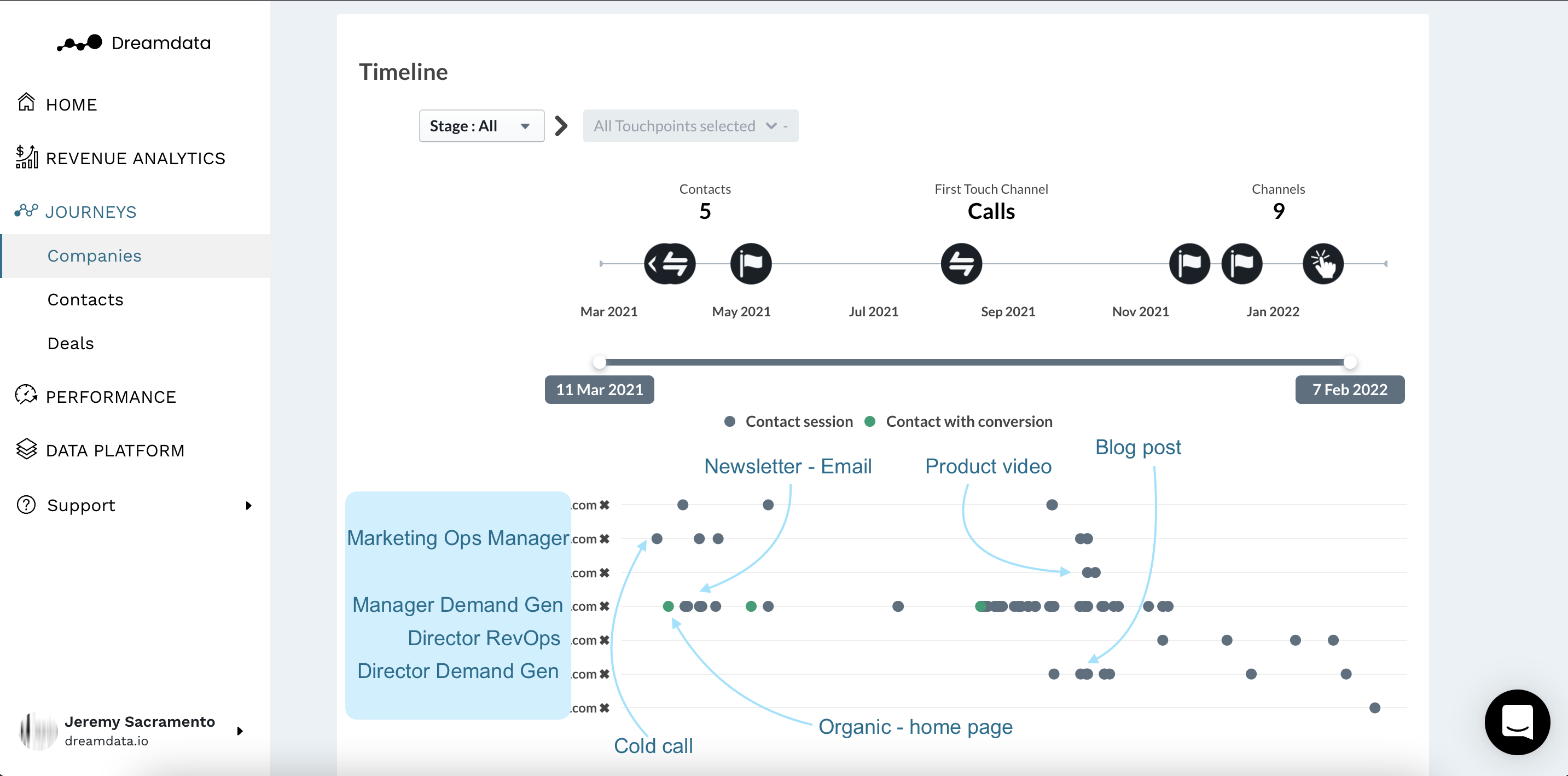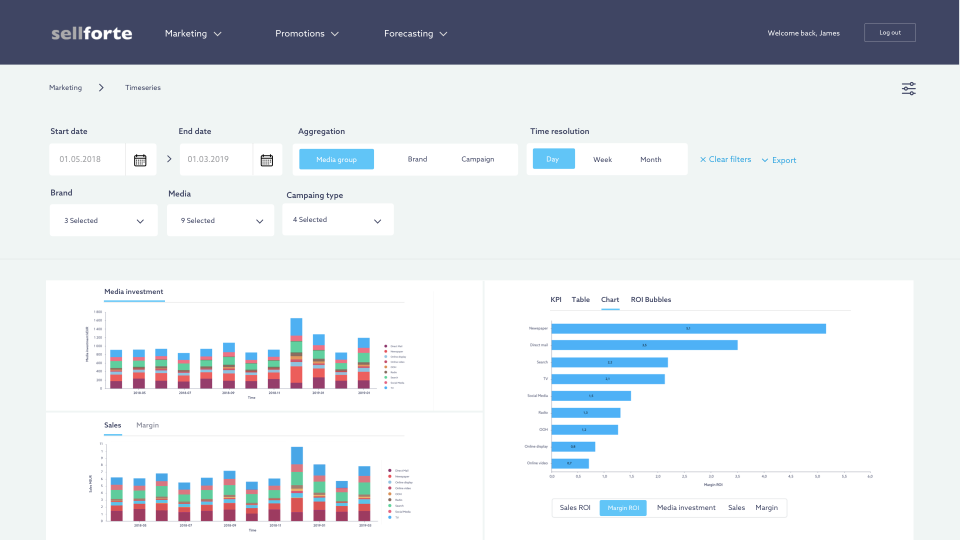Keep CAC low so you can focus on other aspects of growing your business.
Today’s uncertain economy has both large- and small-business owners reassessing their budget and priorities. It's no surprise, then, that over a quarter of U.S. business leaders in Capterra’s 2023 SMB Tech Trends Survey are concerned about finding new customers heading into 2024.*
It takes money to acquire new customers—five to seven times more than it does to retain existing customers.[1] But there are ways to keep customer acquisition cost (CAC) low so you can focus on other aspects of growing your small business. We’ll cover the customer acquisition cost formula and then discuss ways to make CAC one less thing to stress over. Even better? Our tips are all backed by insights from Gartner, a leading global research firm.[2]
What is CAC?
Customer acquisition cost (CAC) is the average sales and marketing expenses required to achieve a first sale with a new customer. It can be calculated with our free customer acquisition cost calculator or by using the formula below.
What is the formula for CAC?
The CAC formula is a simple division equation: Take the amount you’ve spent on marketing and sales in a given time period, and divide it by the total number of new customers acquired during the period. To provide a basic example, say you’ve spent $100 on Google ads in your first month and gained 10 customers from those ads. Your customer acquisition cost would be $10.
Not sure what you’re spending on marketing and sales? Here’s everything that should be accounted for:
Ad spend, which is the amount you spend on paid advertisements.
Equipment or any physical item involved in the creation of your content. If you host a podcast, for example, you’ll need to invest in a microphone and perhaps a mixer.
Software or any technology your team might use to produce content and/or automate a marketing campaign.
Marketing spend, which could be categorized with your ad spend, but more broadly refers to other marketing efforts such as a radio or television commercial, or an ad in a printed publication such as a magazine, newspaper, or community newsletter.
Payroll for sales, marketing, and customer service representatives who assist with customer acquisition.
Our free downloadable CAC calculator includes all of these expenses as well as any other sales or marketing cost you can think of. The more detailed you are, the more accurate your CAC calculation will be.
What is the value of regularly tracking CAC?
By regularly tracking CAC, you can:
Find out how much you spend on each individual customer acquisition method (e.g., paid channels versus social media marketing) and determine whether the cost is justifiable compared to the revenue generated.
Revisit your marketing strategies with a focus on the channels that provide the highest ROI.
Calculate your customer lifetime value (CLTV) to CAC ratio. Your CLTV to CAC ratio shows how much value your customers provide versus how much you spend to acquire them. To calculate CLTV, multiply average sales per customer by the average number of times a customer buys something per year by the average lifetime of your customers.
Tip #1: Know the value of every marketing dollar spent
Our first tip to maintain a lower CAC is to know the value of every marketing dollar you spend. According to Gartner,[2] you should be able to verify that for every dollar you invest in customer acquisition, you know:
How much you’re generating in demand
How many marketing-qualified leads (MQLs) you’re creating and their predicted CLTV
How many new bookings you’re producing and their forecast contract value
How many account sign-ups you’re yielding and their value
We highlight these measures to reinforce that marketing drives demand. It’s important that there’s a clear connection between marketing investments and the growth they create—especially when economic conditions are rocky.
Below are some actions to track the value of every marketing dollar spent so you have more control over your CAC:
Create a profit and loss (P&L) statement. Also known as an income statement, a marketing P&L statement shows how much marketing has made or lost by tracking marketing expenses, revenue, and profit. Download our small-business budget template to make your own.
Keep track of all marketing touch points. Marketing automation software monitors conversion rates and tracks the effectiveness and profitability of your marketing efforts across channels such as television, social media, phone, and email. Some products also provide reports on customer behavior trends.
Leverage AI. Marketing attribution tools, like the one shown below, use AI algorithms to identify which marketing campaigns, channels, or even interactions should receive credit for customer purchases. They do this by analyzing data, identifying trends, and adjusting your marketing strategy accordingly.

Customer journey feature shown in marketing attribution tool Dreamdata
Achieve more with the right tech stack
Tracking the value of your marketing efforts is nearly impossible without the right technology. But at the same time, building a marketing tech stack can be intimidating if you don’t know where to start. Our Insights From a B2B Marketing Expert on Getting the Most From Your Martech Stack article includes expert tips to achieve marketing technology (martech) success.
Tip #2: Track metrics in addition to CAC to see the big picture
While it’s important to track CAC, combining it with two to three other metrics will give you a clearer picture of the value of your marketing efforts. It’ll also enable you to measure how your marketing investments are delivering against a diverse set of goals.
In Gartner’s 2023 Multichannel Marketing Survey, 61% of organizations using three to four metric types exceeded their marketing performance objectives—49% more than those using fewer (two or less) metric types.[3]
See below for some specific Gartner-recommended metrics you can track in addition to customer acquisition cost:[2]
Metric | Definition | Useful for |
|---|---|---|
Campaign ROI | The return generated from a campaign relative to the total cost of the campaign | Minimizing the impact of media and program spend reductions or identifying programs for further investment |
Net profit | The amount of money remaining after deducting a company's total expenses from its total revenue for a given accounting period | Adjusting marketing spend based on overall contribution to the bottom line |
Total addressable market | The overall revenue opportunity available for a product or service if market share is achieved at 100% | Determining the level of funding or resources that a company should invest in a new product or business line |
Reach or impressions | The number of digital views a piece of online content, such as a post, web page, or advertisement, receives | Indicator of top-of-funnel (ToFu) health; provides a complementary view into ROI and similar metrics more focused on demand generation |
Tracking a variety of metrics has the additional benefit of prompting you to reassess and adjust your marketing spend when necessary. For example, if your total addressable market (TAM) decreases, it means your sales are rising more slowly than the rise in the market as a whole, and you may want to change your methods of promotion and focus more on advertising.
Track digital marketing metrics
If your marketing strategy is focused more on digital marketing, How To Measure Your ROI in Digital Marketing lists more metrics you might be interested in tracking, such as cost per lead and average order value.
Tip #3: Use marketing mix modeling to allocate your budget
Our third tip for a lower CAC is to spread your marketing budget across a diverse mix of channels, which can improve ROI if done strategically. This strategy is known as marketing mix modeling (MMM), and it helps quantify ToFu activities that build brand awareness and generate leads (i.e., advertising) but aren’t focused on driving immediate sales.
Marketing mix modeling is ideal for growing businesses that are trying to figure out how much to spend on customer acquisition. The bigger your business grows, the more you’ll need to spread your customer acquisition budget across channels and campaign types. But you should also be able to pivot if a marketing channel or campaign doesn’t perform well.

Reporting feature in marketing analytics platform Sellforte
Marketing analytics tools, like the one pictured above, can help you assess and predict the performance of your marketing channels and campaigns, but you can also use a CRM with reporting and analytics capabilities. Whatever tool you use, it’s crucial that your marketing team, whether in-house or outsourced, is diligent in entering data and tracking metrics like the ones mentioned in the previous tip.
Want to learn more about analyzing your marketing data?
If you’re looking to analyze your marketing data more effectively, Analyzing Marketing Data: A 5-Step How-To is a great place to start. It covers different forms of marketing data and how to get the most out of that data so you can use it to strengthen your marketing strategy.
Manage CAC with tech tools and services
What our tips have in common—besides their ability to help you manage CAC—is their use of tech tools.
Here’s a recap of all our recommendations:
CRM tools’ reporting and analytics capabilities provide insights into customer behavior, sales performance, and marketing effectiveness. They’re popular for their cross-team capabilities and because they offer integration with the tools below.
Marketing automation tools help automate marketing processes. They also allow for end-to-end management of marketing campaigns, including campaign design, tracking, content publishing, customer segmentation, and marketing analytics.
Marketing attribution software identifies your best performing advertising channels. These tools are typically used by marketing teams to track user conversions across touch points and evaluate the effectiveness of marketing efforts.
Marketing analytics software collects and processes data needed for performance evaluation and strategic planning within marketing departments.
If you want to make customer acquisition even easier, you can outsource your marketing and data analytics tasks. We mention digital marketing agencies because they’re a natural choice to boost your customer acquisition efforts. Digital ad agencies, in particular, can help by analyzing your ad performance through data analytics tools and then making adjustments to the ads to optimize them for better conversions.
Another option, particularly for tracking metrics and adopting a marketing mix modeling strategy, is data analytics agencies. These companies can help interpret your marketing data so you can improve your marketing strategy while staying within budget. Learn more about them here.
Note: The screenshots of applications included in this article are examples to show a feature in context and are not intended as endorsements or recommendations.
